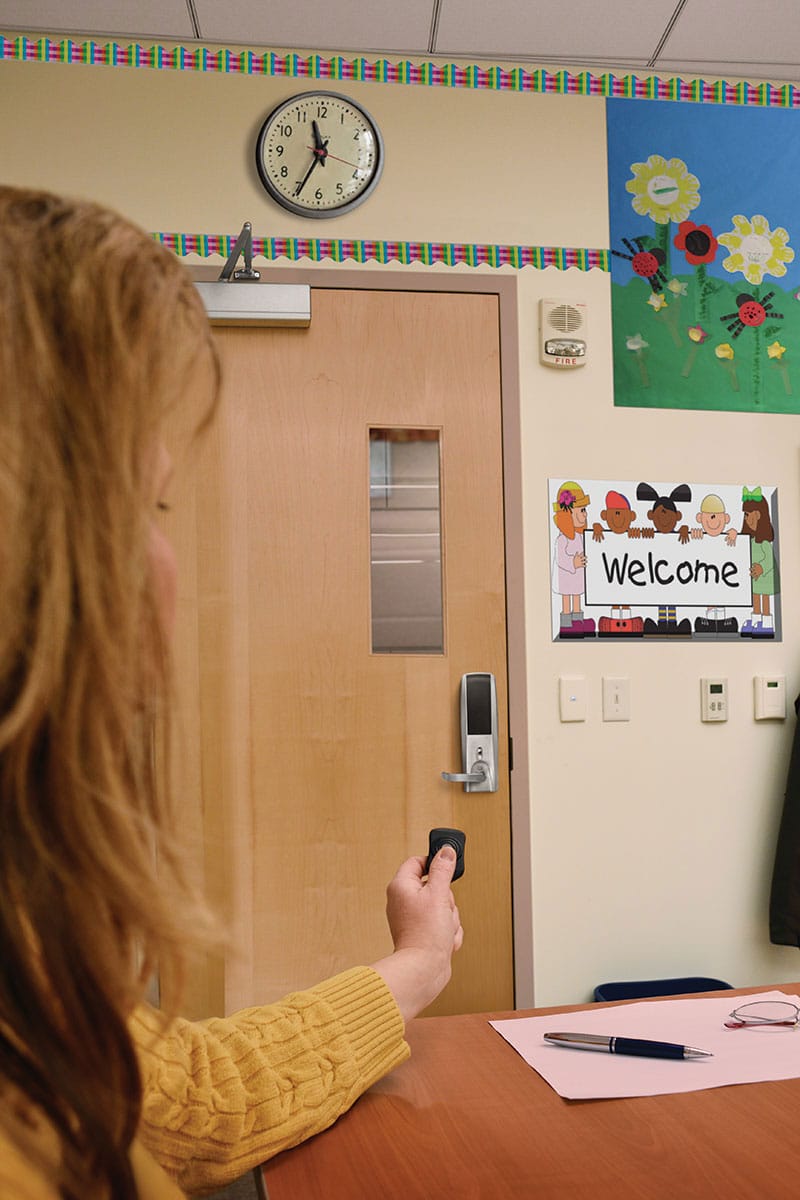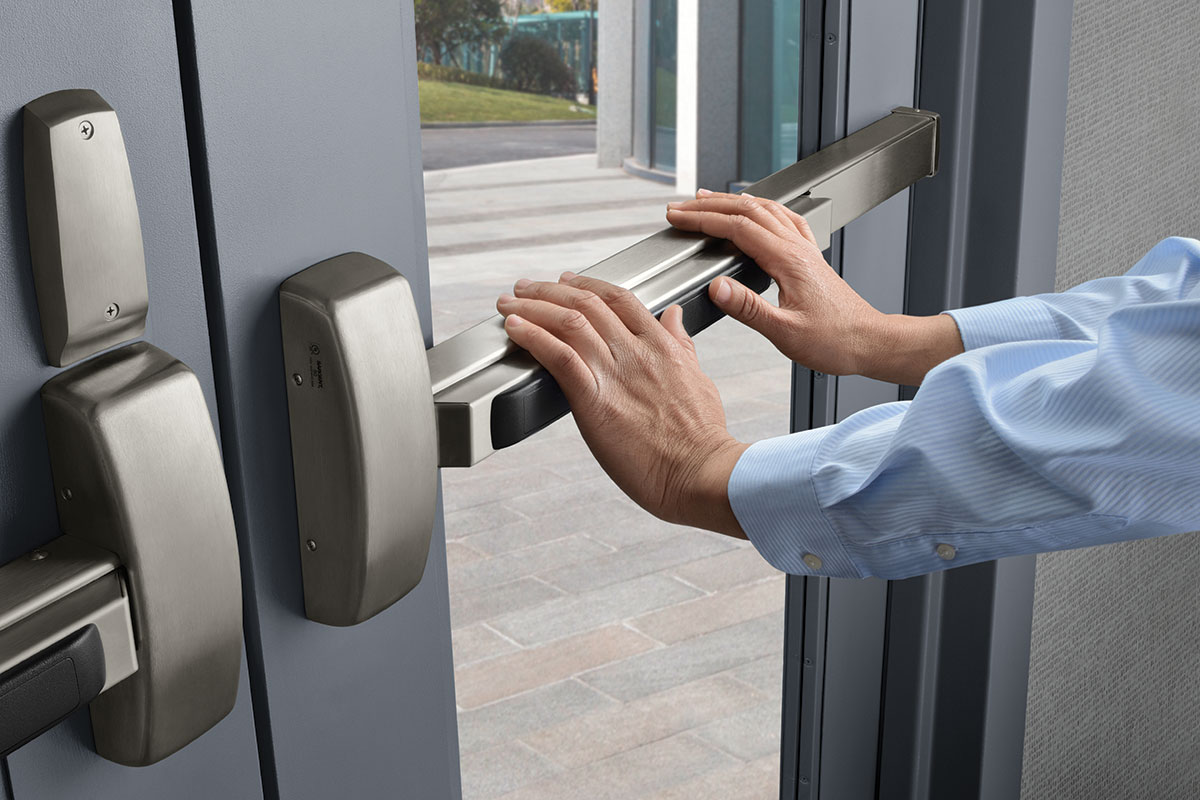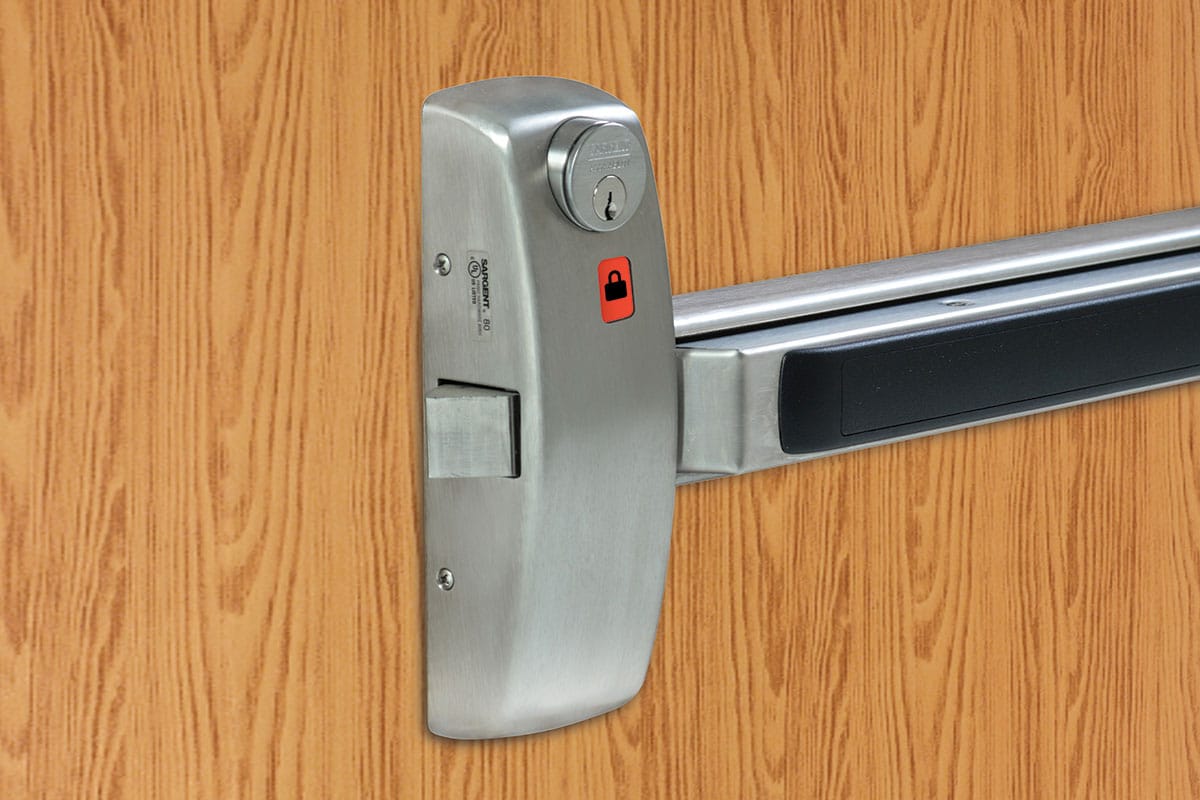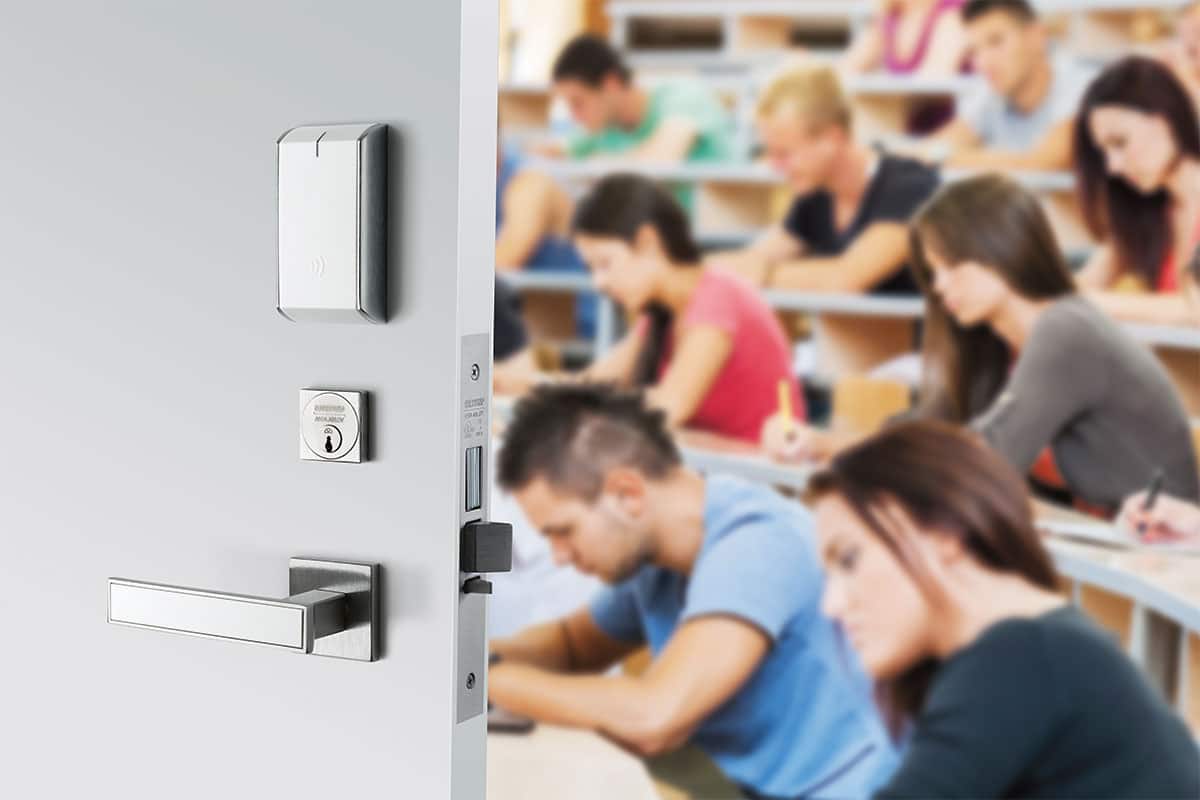How one company is demanding doors that protect

ASSA ABLOY partnered with School Guard Glass and used SARGENT hardware to make even more durable doors.
Courtesy of ASSA ABLOY
When The Station nightclub fire occurred in 2003, killing 100 people, product engineers at Swedish-owned lock manufacturer ASSA ABLOY Group’s SARGENT brand gathered to examine how they could make exits more visible in a fire. When a gunman opened fire at Sandy Hook Elementary in 2012, killing 26, they met to see if they could come up with a door that offered more protection. “We were angry, wanting to know what we could do to make sure this didn’t happen again,” says Stacey Callahan, vice president of innovation and marketing for the door group at ASSA ABLOY.
With each passing tragedy, consumers rightfully demand more safety and protection features in their institutional and commercial-built environments. Coupled with the rise of information on volatile organic compounds and indoor air quality, consumers also want to be sure their environments are healthy in general. “People are more aware. Think about that new car smell. That new car smell is great, but then you realize just how many chemicals you may be inhaling,” says Brian McFeeley, southeast regional architectural director at ASSA ABLOY. “People are more aware of what products are made of and what it takes to create them.”
These consumer requests, along with ASSA ABLOY’s continued commitment to being transparent in the production of its products, are keeping the world’s largest manufacturer of door opening solutions on its toes.

Courtesy of ASSA ABLOY
Resisting Attack
In response to institutional violence, ASSA ABLOY’s team has received many calls from school officials looking for bullet-resistant doors. “That wasn’t feasible for a school because they are too heavy and expensive,” Callahan says. “The main area of weakness was the glass, so we decided to see what we could do to harden the entire door opening without costing the school a lot of money.” They landed on an attack-resistant door.
The company partnered with School Guard Glass. Designers took a standard-sized door and used School Guard Glass glazing and SARGENT hardware. The result is a door designed to withstand an intruder attack for at least four minutes. “Bullets will go through the glass, but this glass will stay intact whereas the glass on a traditional door would shatter,” Callahan says. “We first shot the glass, the door, and the hardware each 30 times to weaken the opening and then conducted the attack test using a variety of tools, like the butt of a gun, hammer, and crowbar, which are typical for an intruder to use. Staying intact over four minutes gives enough time for first responders to arrive on the scene.”
The attack-resistant doors are fire rated for up to 90 minutes to ensure classrooms are protected and fire codes are met. “You have to make sure to not violate fire codes, because you could actually cost more lives,” she says.

Courtesy of ASSA ABLOY
Controlling Access
Administrators of institutional and commercial-built environments alike are looking for ways to increase control over who has access to labs, rooms, and offices. “Classroom security is the number one thing we are getting questions about lately,” says Jeremy Saline, business development director for higher education at ASSA ABLOY. “When we consult with institutions we are trying to create the safest and most convenient experience for students, faculty, staff, and visitors.”
Administrators can control who has access to facilities through a variety of options, including physical, logical, offline, wireless, or online locks. Additionally, the electronic access control locks integrate with existing access control systems from many manufacturers, providing a cohesive view of the facility. Locks can be controlled remotely, allowing quick response in the case of a security incident.

ASSA ABLOY put the latest doors and hardware through intense testing.
Courtesy of ASSA ABLOY
Healthier Door Solutions
Sustainability and transparency have always been top priorities at ASSA ABLOY. Numerous products carry Declare Labels to specify exactly what each product is made of and identify any chemicals on the building materials Red List. That’s why the company was recruited by architects Lord Aeck Sargent to provide door solutions for Georgia Tech’s anticipated Living Building, the Kendeda Center. “Institutions have long overlooked what a door opening can provide in terms of sustainability and health in addition to the inherent security elements,” Saline says. “Georgia Tech recognized this positive contribution and has plans to incorporate more of our products on future projects.”
Every detail was important in the construction of the center, down to the door hardware. The goal of the project was to only use materials that were Red List–free. “We talked about hardware on this project more than ever before,” McFeeley says. The ASSA ABLOY team was required to provide Declare Labels for every product they used at the Kendeda Center. “Some of the products did include chemicals that were on the Red List, but we were transparent about it and were diligent to minimize those ingredients as much as possible. It has taught us a lot.”

Courtesy of ASSA ABLOY
“ASSA ABLOY has a continued commitment to making products, processes, and the built environment safe, responsible, and energy-efficient,” Callahan says. “The entire organization supports the demands of progressive projects and through product design and manufacturing provides noticeable and measureable improvements in efficiency, occupant safety, and health in buildings.”
